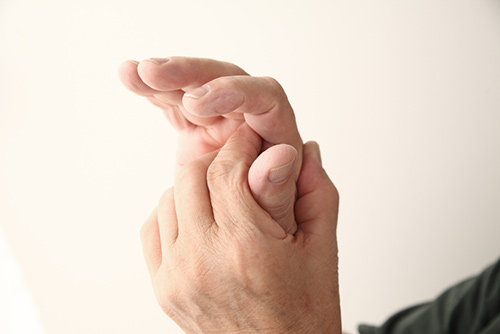
Who is Most Likely to Develop Trigger Finger?
Individuals suffering from conditions such as gout, rheumatoid arthritis, and diabetes are more vulnerable to developing trigger finger. Individuals that work in certain industries that require heavy use of their hands, such as farmers, musicians, and industrial workers, are also at greater risk. Additionally, women are more susceptible to the condition than men.
Signs and Symptoms
One of the most common symptoms of trigger finger is pain near the base of the finger or thumb. A painful snapping or clicking when trying to straighten or bend the finger is also a symptom. This symptom in particular often worsens over time, to the point where individuals may need to use care when straightening the affected finger or thumb.
Diagnosing Trigger Finger
If you think you might have trigger finger, your best course of action is to schedule a visit with your doctor. During the office visit, your doctor will examine your fingers and hand, looking for any swelling or bumps near the joints. Severe trigger finger cases are simple to diagnose, as the affected finger will likely be locked, bent, or stiff.
Treatment
Patients who have been diagnosed with trigger finger are often instructed to rest their affected finger and sometimes need to use a hand splint to immobilize the joint. In more severe cases, involving prolonged inflammation, drugs may be prescribed, or steroid injections might be injected into the tendon to help relieve discomfort and pain. If the condition persists, surgery may be necessary.

